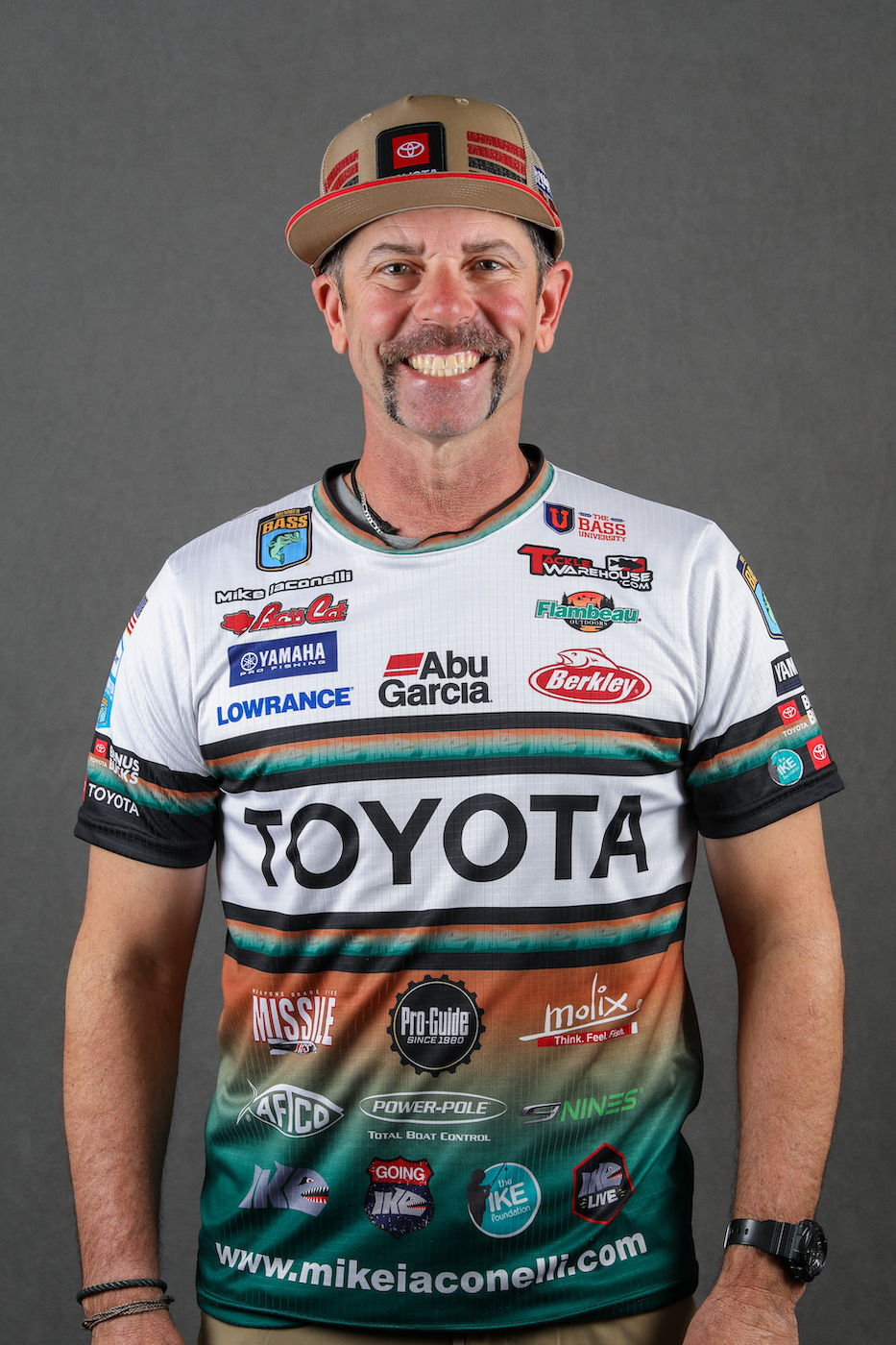One of the misconceptions I hear a lot in my seminars is that finesse fishing is limited to light lines, whippy spinning rods and tiny 3-inch baits. It's something you generally do in deeper water when nothing else works, and all you can expect to do is catch small bass.
Nothing, absolutely nothing, could be further from the truth. You can finesse with power, using baitcasting tackle, heavy lines, big sinkers and big plastics. You can even finesse crankbaits and spinnerbaits, but my favorite presentation comes straight from drop shotting, and it's called power shotting.
Normally, I base my decision to do power shotting on just two factors: heavy cover and the size of the bass I might catch. With the exception of a heavier rod and line, larger hook and usually a larger bait, everything else in power shotting is the same as in normal drop shotting. It's still about keeping your lure above the bottom and maintaining a natural presentation.
Instead of my spinning rod, I use a 7-foot baitcasting rod or maybe even a flipping stick, and instead of 8-pound fluorocarbon with a 3/16-ounce weight, I move up to 15- to 17-pound fluorocarbon with a 1/2-ounce or heavier sinker. I change my 4- and 6-inch thin finesse worms for 8- or 10-inch PowerBait worms, a Brush Hawg or even a Beaver, and I rig them with 3/0 to 5/0 heavy gauge hooks (extra wide gap for the creature baits). Knot-wise, I'm generally using an improved clinch because it works so well with fluorocarbon.
Remember, your presentation is the same even with this bigger stuff — don't overwork your bait. Regardless of whether you're fishing brush, a boat dock, or even heavy mats of vegetation, get the bait into the cover, keep a slight bow in your line, and just let the bait sit there and work for you. The bow in your line does let you shake the bait every once in awhile without moving the sinker.
Most fishermen shake a drop shot way too much. You don't have to move it; current, natural hand movement and the design of the lure itself will keep it moving. Sometimes drop shotting is like deadsticking, in which you cast, let the lure get to the bottom, and you just leave it there.
For me, this is a perfect place to use power shotting, and I do it every time I'm fishing a lake with matted surface vegetation. I set up my heavy drop shot rig, even upgrading my line to 20- or 25-pound fluorocarbon, and using a 1-ounce tungsten sinker with a 10-inch red shad Berkley PowerBait worm. The reason I don't use braid, even in heavy cover like this, is because braid floats so I don't get a natural fall with my lure, and bass can see it. I think fluorocarbon is a much better choice.
You can cast when you're power shotting mats, or maybe move closer and pitch to the cover. The heavy weight will pull your lure through, but here's where it shines. When the sinker reaches the bottom, your lure is still up in the water column where plastics are seldom fished — and it's staying there. That's something the pitchers and flippers can't really do.
If you've never fished thick, matted surface vegetation, especially in Florida, let me tell you why power shotting like this is so effective. First, there is open water underneath the vegetation, and the grass and the root stems of the hyacinths dangling in this open water are covered with tiny grass shrimp about 1/4 inch long.
When your heavy sinker and worm punch through, they knock some of those little shrimp off the roots, and suddenly the bluegills and sunfish start feeding. Their movement and feeding triggers the bass into action, and the first thing they see is your big plastic bait quivering right there in that open water column.
Power shotting really works well around bridge pilings, too, because not only do the big concrete structures collect brush being washed downstream, they can also attract some big bass that generally suspend beside those pilings and brush. My presentation here is often to put my boat slightly downstream and cast upstream beside the pilings, then walk and drift my bait down current.
Sometimes you can catch nice bass by fishing directly behind the pilings on their downstream side where the bass can get some protection from current. The best places are where the current has washed out a slightly deeper hole behind the pilings. As a result, the water flow pattern has changed and more food washes around the piling and into that deeper depression. Again, I hold my boat downstream in the current and cast upstream and let the water wash my bait right into that hole.
You can power shot with spinning gear, and I do use spinning gear on occasion for this. I spool with a braided line, like FireLine, and use a much longer fluorocarbon leader, again, so the bass won't see it. I don't use as large a lure or sinker; mainly what I'm doing is beefing up my line. But if I'm in really thick cover, or looking for heavier bass, I'll use my baitcasting setup. I've caught bass around 8 pounds power shotting, so you know it works.





